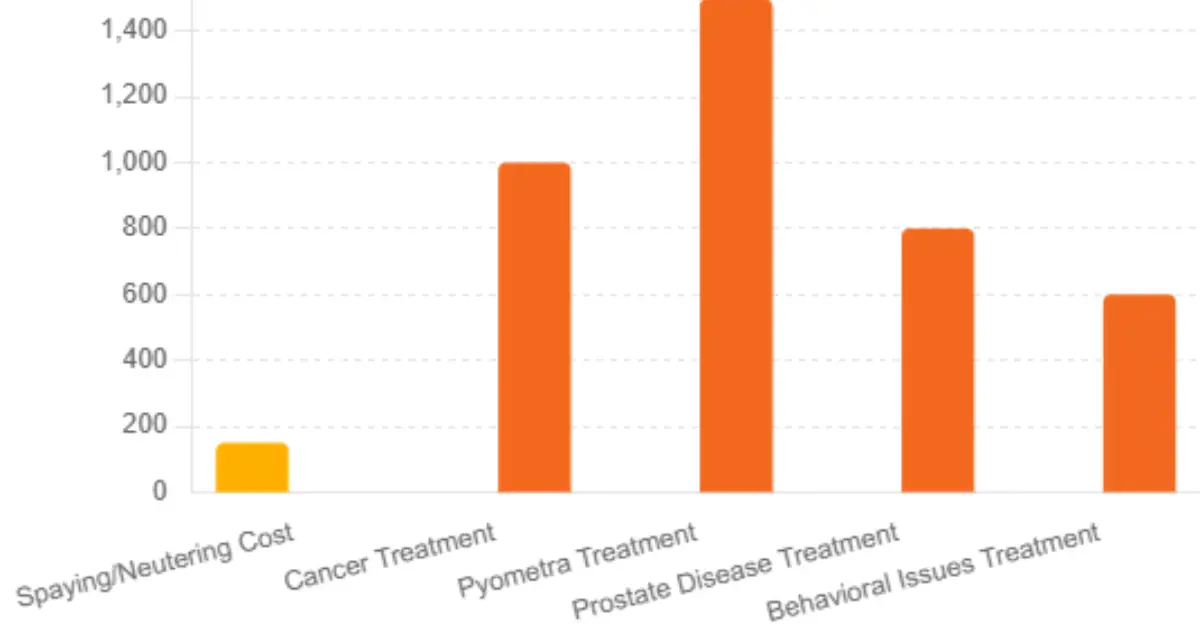The Hidden Benefits of Spaying Or Neutering Your Cat
Published: 29 Jan 2025
You want the best for your furry friend as a responsible cat owner. One of the most impactful choices you can make for your cat’s health and well-being is having them spayed or neutered. Though the procedure is simple, the advantages are far-reaching. It prevents unplanned litters and contributes to a healthier, more balanced life for your cat—and can even save you Money in the long run.
In this post, we’ll highlight the numerous benefits of spaying or neutering and why it’s one of the most intelligent decisions you can make for your cat and your community.

Table of Contents
What Do Spaying and Neutering Involve?
Before we explore the many benefits, let’s break down what spaying and neutering mean:
- Spaying is a surgical procedure performed on kittens, in which the ovaries and uterus are removed, preventing them from becoming pregnant.
- Neutering is used explicitly with male cats and involves removing the testicles. This procedure causes a cat to become sterile and can lead to a reduction in behaviors like aggression and territory marking.
These surgeries are quick, simple, and typically done under general anesthesia, so your cat will be comfortable during the procedure. Afterward, Ensure your cat stays warm and cozy as they recover, particularly during colder months. You can read more about keeping cats warm in winter to ensure their comfort during healing. Now, let’s explore why this simple surgery can have a lasting impact.

1. Health Benefits for Your Cat
Female Cats:
- Prevents Uterine Infections: Female cats that are not spayed are at risk of growing pyometra, a life-threatening infection of the uterus. Spaying removes this risk entirely, helping to avoid the need for emergency medical treatment.
- Reduces Cancer Risks: Spaying your female cat before her first heat cycle significantly lowers her risk of developing breast cancer. Studies show that spaying earlier than the first heat can secure up to 90% of these cancers.
Male Cats:
- Prevents Testicular Cancer: Neutering eliminates the risk of testicular cancer, which is common in unneutered male cats.
- Promotes Prostate Health: Neutering also helps prevent prostate problems in male cats, such as infections or enlargement, which can cause pain and urinary issues.
By spaying or neutering your cat, you’re helping them avoid severe health issues that could lead to costly treatments in the future. Proper cat nutrition plays a crucial role in your cat’s recovery and overall health. A well-balanced diet will help maintain a healthy weight and support healing after surgery.”
2. Positive Behavior Changes
Spaying and neutering don’t just improve your cat’s health—they can also help with behavior. Here’s how:
Both Male and Female Cats:
- Less Aggression: Many cats become more relaxed and less aggressive after the procedure. Female cats in heat often exhibit mood swings and aggression, while unneutered males may fight over mates. Spaying or neutering reduces these territorial behaviors, making your cat calmer and friendlier.However, If you notice that your cat is meowing more than usual, it could be part of its adjustment process after surgery. This behavior is typically temporary, and your cat will return to normal soon.
- Reduced Roaming: Cats that aren’t spayed or neutered often roam searching for mates, which can be dangerous. These cats are more likely to get lost or injured. Once your cat is fixed, it’s less likely to wander, keeping it safer at home.
- More Affectionate: With reduced mating instincts, spayed or neutered cats often focus more on you, their human companion. This can lead to a more loving, cuddly relationship.
3. Reducing the Cat Population Crisis
One of the most important reasons to spay or neuter your cat is its impact on cat overpopulation.
- Preventing Unwanted Litters: Millions of kittens are born yearly, and many end up in shelters. You can avoid this cycle of overpopulation by having your cat spayed or neutered.
- Fewer Stray Cats: Stray cats can cause significant community problems, from spreading disease to competing for resources. Spaying or neutering can reduce the stray population and ease the burden on local shelters.
Example: In cities like San Francisco, free or low-cost spay/neuter programs have substantially reduced the number of kittens born each year, helping to reduce the number of stray cats.

4. Saving Money in the Long Run
While there’s an initial cost for spaying or neutering, this decision can save you Money over time.
- Avoid Expensive Health Treatments: Cats not spayed or neutered are more likely to face health issues like pyometra or testicular cancer. These conditions are costly to treat, but you can avoid these expensive medical bills by spaying or neutering your cat early.
- Prevent Destructive Behavior: Neutered cats are less likely to engage in destructive behaviors, like spraying or marking their territory. This will save you from dealing with the mess and frustration of cleaning up urine marks around your home.
Example: Sarah, a cat owner, had a male cat who frequently marked the furniture with urine. After he was neutered, the marking stopped, and Sarah noticed he was much calmer and more affectionate.
5. Debunking Common Myths
There are many myths about spaying and neutering, so let’s clear up some of the confusion:
Myth 1: Spaying or Neutering Will Cause Weight Gain
- Reality: The surgery itself doesn’t cause weight gain. What matters is your cat’s diet and level of activity. If you keep feeding them the right amount of food and encourage playtime, they’ll maintain a healthy weight.
- Tip: Keep your cat active with toys and daily play sessions to keep them fit.
Myth 2: The Surgery Is Too Painful
- Reality: Your cat will be under anesthesia during the surgery so that they won’t experience pain. Many cats recover quickly and return to their usual selves within a few days, though they might feel groggy after the procedure.
- Tip: For smooth recovery process for your cat Follow your vet’s aftercare instructions carefully.
Conclusion
Spaying or neutering your cat is a choice that has many benefits: improved health, better behavior, and a reduction in the number of stray cats in your community. It’s a simple procedure that can make a difference in your cat’s life.
If you haven’t done so, visit your vet to have your cat spayed or neutered. It’s one of the best things you can do for their future. To learn more about general feline health and preventative care, check out this informative guide on Preventative Health for Cats.
Quick Tips for a Smooth Recovery:
- To ensure proper healing Keep your cat indoors for a few days
- Regularly examine the incision site for infection signs or swelling.
- Offer soft food and fresh water to aid their recovery.
FAQs
1. How quickly will I notice behavior changes after spaying or neutering?
Behavioral changes are often noticeable within a few weeks of the procedure. Once their hormones settle, cats typically become more relaxed and less territorial.
2. Can spaying or neutering help prevent future health problems?
Yes, it significantly reduces the chances of certain cancers and infections related to the reproductive system. These surgeries also prevent life-threatening conditions like uterine infections or prostate issues.
3. What are the long-term benefits of spaying or neutering my cat?
In the long term, these surgeries decrease the likelihood of serious health conditions and contribute to a calmer disposition. Neutering male cats, for example, can reduce aggressive tendencies and unwanted marking behavior.
4. Do spayed or neutered cats need any special care afterward?
After the procedure, your cat may need a few days of rest, and it’s essential to monitor their incision site for signs of infection. Keeping them indoors and limiting physical activity is key for a smooth recovery.
5. Can spaying or neutering reduce my cat’s stress?
Yes, the procedure can reduce stress linked to mating behavior. Female cats often become less anxious after spaying since they won’t go through heat cycles, and male cats are less likely to engage in territorial disputes.
6. Is there any evidence that spaying or neutering improves a cat’s temperament?
Many cat owners report a noticeable improvement in temperament post-surgery, with their pets becoming more affectionate and less irritable. The reduction in hormones can make cats calmer and more social.
7. At what age is the best time to spay or neuter my cat?
The ideal age is around 5 to 6 months before the cat reaches sexual maturity. Early spaying and neutering can maximize the health benefits, as the procedure is most effective before cats develop specific behaviors and health risks.

- Be Respectful
- Stay Relevant
- Stay Positive
- True Feedback
- Encourage Discussion
- Avoid Spamming
- No Fake News
- Don't Copy-Paste
- No Personal Attacks



- Be Respectful
- Stay Relevant
- Stay Positive
- True Feedback
- Encourage Discussion
- Avoid Spamming
- No Fake News
- Don't Copy-Paste
- No Personal Attacks





